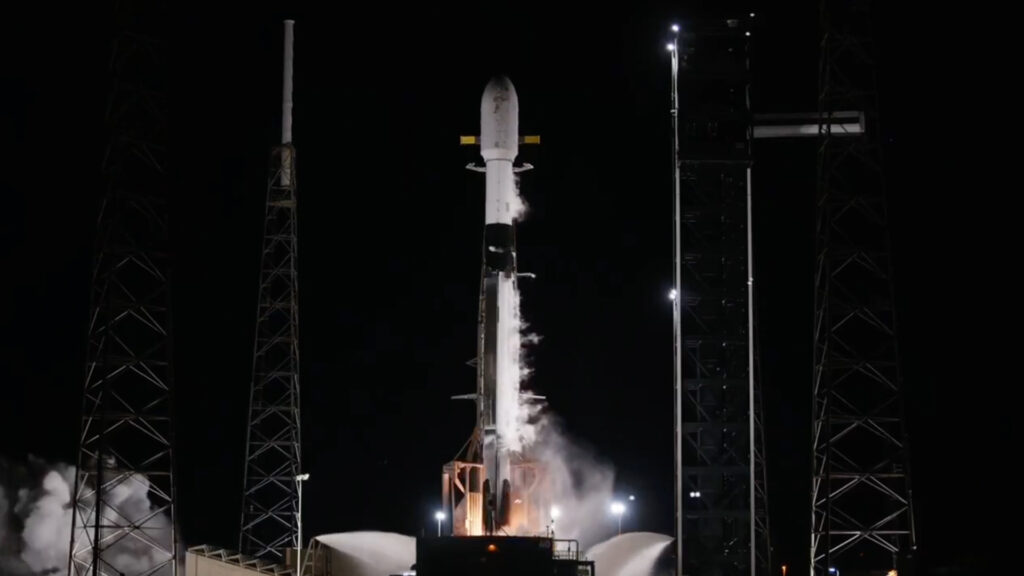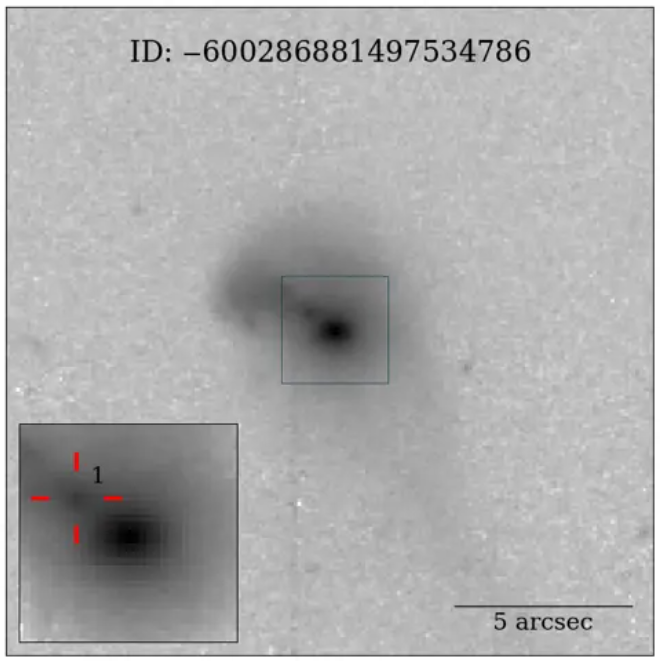Now Reading: Scientists use the JWST to study an extremely ancient galaxy piercing through the Cosmic Dark Ages
-
01
Scientists use the JWST to study an extremely ancient galaxy piercing through the Cosmic Dark Ages
Scientists use the JWST to study an extremely ancient galaxy piercing through the Cosmic Dark Ages
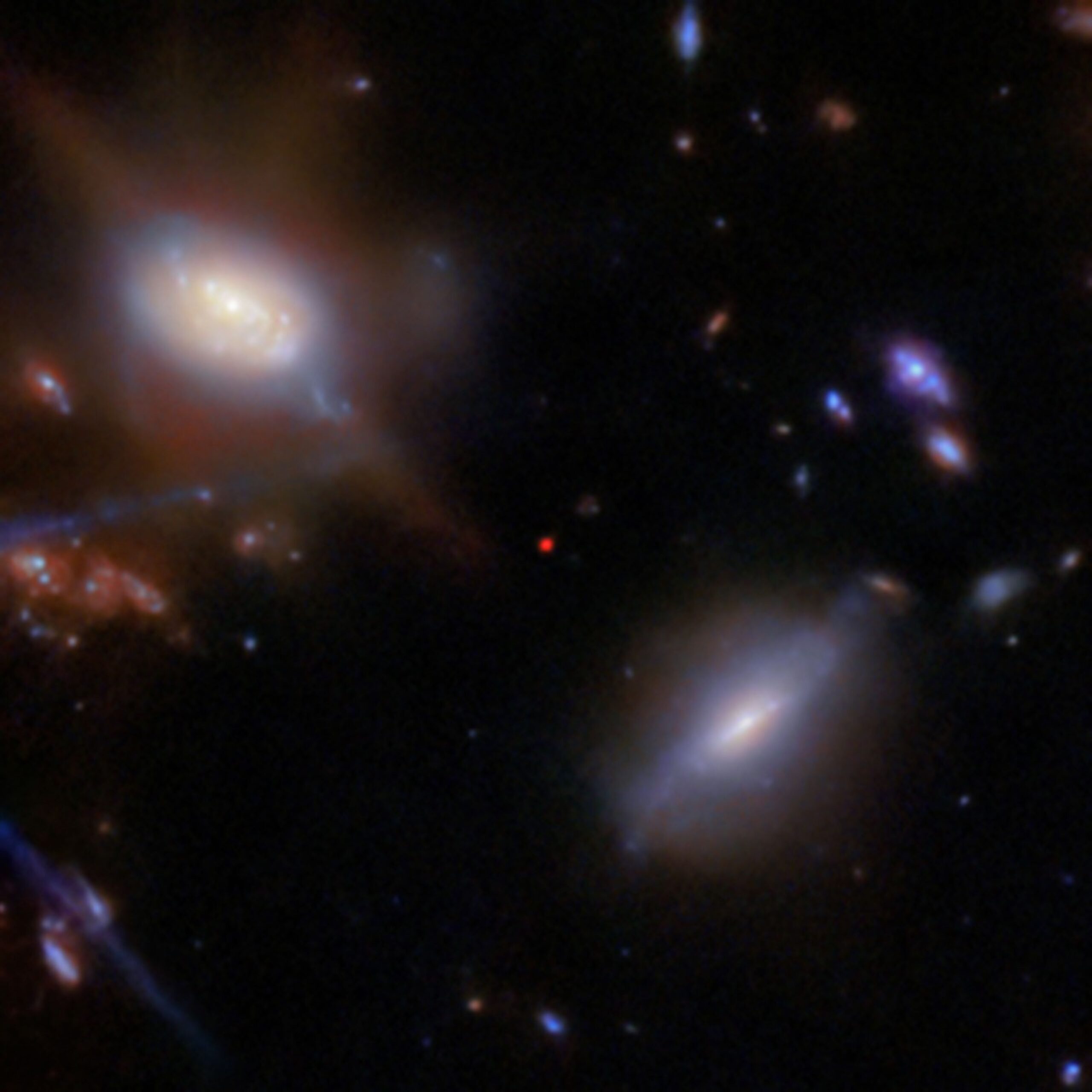
Astronomers have caught an immensely ancient galaxy piercing the veil of darkness that shrouded the early universe.
It’s surprising any light from distant galaxy JADES-GS-Z13-1-LA reached Earth at all. Photons coming from the realm that recently landed on the James Webb Space Telescope‘s mirrors existed when the universe was just 330 million years old — and, at that point in its adolescence, the universe was foggy and dim. A dense haze of gas suffused the space between stars, and even between galaxies, absorbing starlight and muffling the whole universe in darkness.
Astronomers call this period the Cosmic Dark Ages, and JADES-GS-Z13-1-LA is the earliest light we’ve seen (so far) piercing that cosmic fog.
Shedding light on a big moment for the universe
More than 13.5 billion years ago, JADES-GS-Z13-1-LA blazed brightly in ultraviolet light — but as that light crossed billions of light-years between its home galaxy and the Milky Way (which were moving farther apart the whole time, thanks to the fact that the universe is still expanding in the wake of the Big Bang, so everything is still getting farther apart from everything else), its waves stretched out.
As a result, the distant galaxy’s ultraviolet light had become infrared light by the time it reached the Milky Way.
Infrared is invisible to humans, but it’s indeed visible to the sensitive instruments aboard the JWST, like the Near-Infrared Camera, Near-Infrared Spectrometer, and Mid-Infrared Instrument.
University of Copenhagen astrophysicist Joris Witstok and his colleagues used data from those instruments to shed light on a mysterious period in our universe’s distant past: the Epoch of Reionization. Also known as Cosmic Dawn, this was the moment when the light of the first galaxies began to clear away the dense fog that had filled the universe — and absorbed ultraviolet light — around 400,000 years after the Big Bang.
JADES-GS-Z13-1-LA is right on the cusp of that crucial moment in our universe’s history. It’s among the pioneers of reionization and one of the oldest galaxies we can actually see. And that means it can teach physicists about how that process happened and how the earliest galaxies evolved.
“I think one of the most intriguing questions about reionization is whether we can pinpoint the very first moment it started across the Universe,” Witstok told Space.com, “which should coincide with the formation of the first generation of stars.”
From cosmic dark ages to cosmic dawn
By around 300 million years after the Big Bang, the first stars had coalesced from the universe’s primordial cloud of matter. Nuclear fusion deep inside these stars was churning out the very first starlight of the cosmos. At the same time, a dense fog of hydrogen gas with a little helium mixed in filled the universe and absorbed the starlight.
The Cosmic Dark Ages were in full swing.
The all-pervading fog formed as the universe slowly cooled down from the tremendous heat and pressure of the Big Bang. At first, all the matter that had burst into existence with the Big Bang was bouncing around in the form of positively charged protons and negatively charged electrons (well, the protons had probably started as quarks, which eventually stuck together to make protons).
Those particles eventually slowed down enough to catch hold of each other and form atoms. Together, those atoms made up a thick haze of hydrogen and helium, exhibiting no electrical charge. That dense, neutral fog absorbed ultraviolet light and acted like a cosmic blackout curtain hung between the galaxies. But ultraviolet radiation changed the cloud itself in the process, knocking electrons off atoms and giving the gas an electric charge (or ionizing it, as physicists would say).
Ionized gas, also called plasma, absorbs energy differently than neutral gas does, so galaxies’ light at that time had begun to pierce the veil.
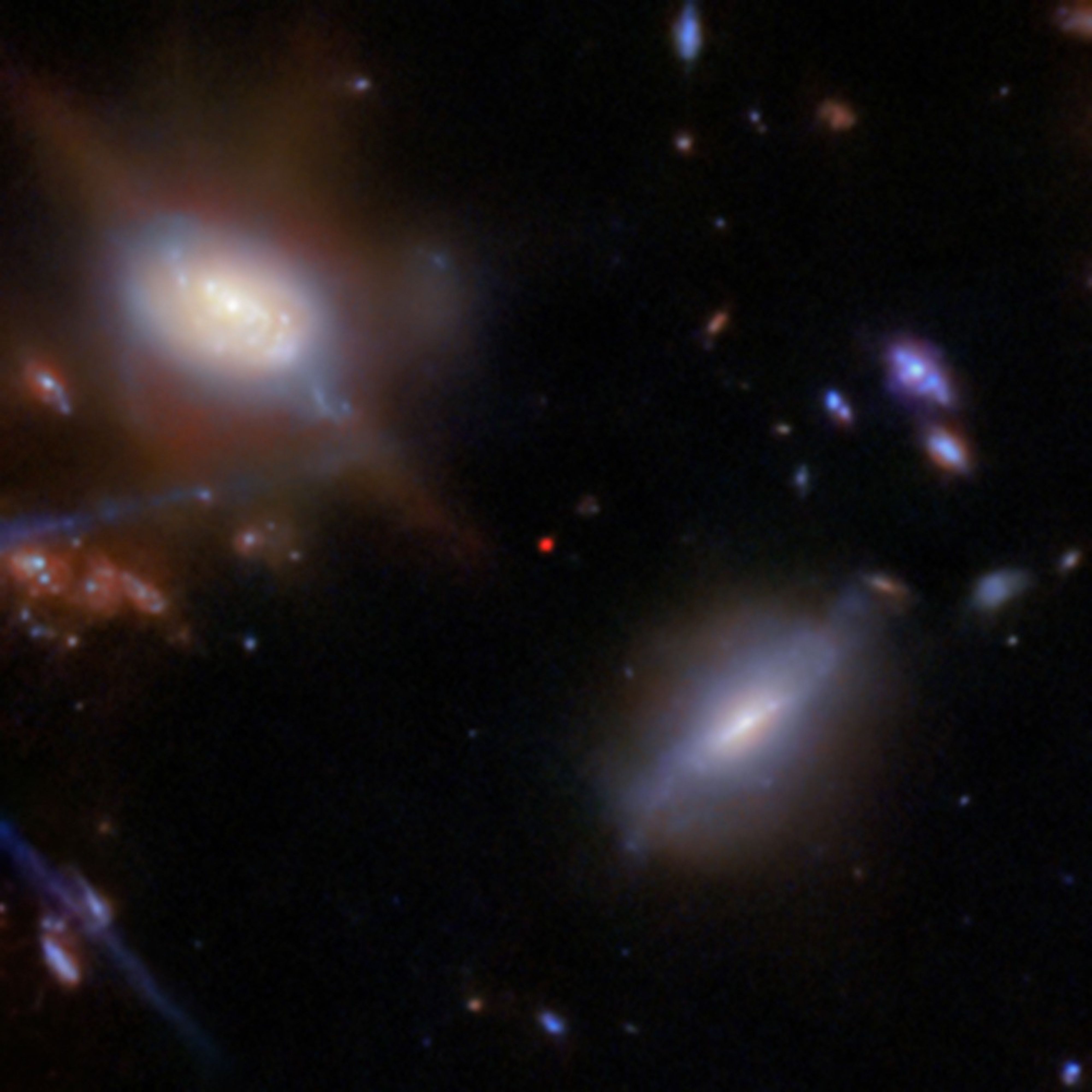
Light from JADES-GS-Z13-1-LA would have created a bubble of reionized plasma around itself. And, by the time the light passed beyond the bounds of that bubble — about 650,000 light-years, according to Witstok — its wavelengths would have stretched enough that at least some of it would have been able to pass through the intergalactic cloud.
University of Melbourne astrophysicist Michele Trenti, who was not involved in the study, tells Space.com she’s curious about how those bubbles of plasma grew and overlapped over time during the Epoch of Reionization, until the whole universe was eventually reionized — and transparent.
Massive stars or a supermassive black hole?
Witstok and his colleagues noticed that the light from JADES-GS-Z13-1-LA looked bluer than they expected (meaning that more of it came from the shorter-wavelength end of the electromagnetic spectrum). The galaxy is also giving off a surprising amount of a type of light called Lyman-α radiation. This Lyman-α radiation happens when neutral hydrogen gets a blast of ultraviolet radiation, which excites its electron. As the electron settles back down, it lets off that energy as Lyman-α radiation.
The presence of so much Lyman-α in the galaxy’s spectrum suggests it’s bombarding the surrounding hydrogen with a lot of ultraviolet radiation.
“These two facts combined make the galaxy unique (and therefore surprising),” says Trenti, “and [they’re] inconsistent with expectations from typical galaxies we see at the end of reionization [around 0.8 billion to 1 billion years after the Big Bang].”
Explaining the galaxy’s surprisingly energetic glow requires something else surprising: Either JADES-GS-Z13-1-LA is bustling with unusually massive, hot blue stars, or it has an unusually huge supermassive black hole at its center that’s actively gobbling up gas.
If we’re seeing the light from the galaxy’s billions of stars, those stars would have to be huge and hot: about 15 times hotter than the sun, and more than a hundred times more massive.
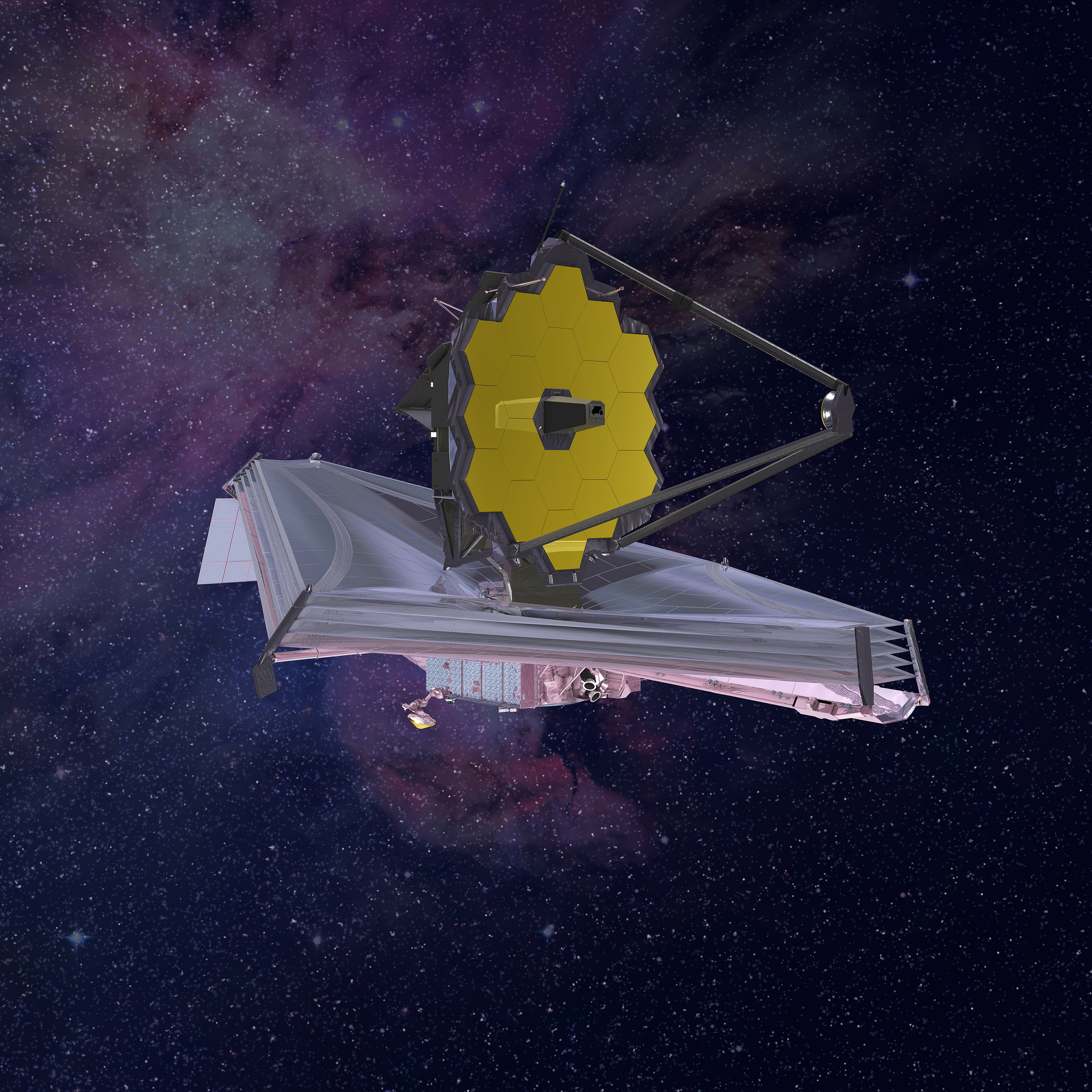
On the other hand, if we’re seeing the light from a voraciously feeding supermassive black hole, it would have to be even more massive than the one at the heart of our Milky Way, which boasts the mass of about 4 million suns. For most of the models of how galaxies (and the supermassive black holes at their centers) formed and grew, that’s a shocking idea: so early in our universe’s history, no supermassive black hole should have had time to grow to such a gargantuan size.
“There are certain theoretical models where this would be expected though, so if this were the case it could have very important implications for such theories for early black hole formation,” says Witstok.
For Trenti, this is one of the most interesting questions about the Epoch of Reionization: “What are the sources of radiation that contribute to reionization? Is the process driven by normal stars, exotic stars, or accreting black holes?”
The answer could tell us something about how early galaxies formed and evolved into ones like our Milky Way and its thoroughly modern neighbors.
A cosmic mystery remains — for now
But Witstok and his colleagues still don’t have enough information to solve that particular mystery.
“This discovery starts shining some light on when reionization started, but it is just a preview that stirs curiosity, it is hard to do science with a sample of only one object,” said Trenti.
Witstok agrees, but he’s optimistic about finding more galaxies from the cusp of the Epoch of Reionization – and so far, JWST has been pushing the boundaries of how far back in time astronomers can see.
Related Stories:
“I’m sure over the next years we will find examples of even more distant galaxies with similar characteristics,” Witstok said. “The next steps include investigating this galaxy in more detail, with new observations already having been obtained and more scheduled to be taken in the near future, but also finding more examples of galaxies with very bright Lyman-α radiation very early on.”
If astronomers can get more detailed measurements of the spectrum of light coming from the galaxy, they may be able to measure how much helium, oxygen and carbon are involved in producing the light. That will let them compare JWST’s measurements to computer models of the physics involved and see which explanation best matches the data.
The study was published on March 26 in the journal Nature.
Stay Informed With the Latest & Most Important News
Previous Post
Next Post
-
 012024 in Review: Highlights from NASA in Silicon Valley
012024 in Review: Highlights from NASA in Silicon Valley -
 02Panasonic Leica Summilux DG 15mm f/1.7 ASPH review
02Panasonic Leica Summilux DG 15mm f/1.7 ASPH review -
 03How New NASA, India Earth Satellite NISAR Will See Earth
03How New NASA, India Earth Satellite NISAR Will See Earth -
 04And Thus Begins A New Year For Life On Earth
04And Thus Begins A New Year For Life On Earth -
 05Astronomy Activation Ambassadors: A New Era
05Astronomy Activation Ambassadors: A New Era -
06SpaceX launch surge helps set new global launch record in 2024
-
 07Space Force plans new ‘Futures Command’ amid pressure to speed up modernization
07Space Force plans new ‘Futures Command’ amid pressure to speed up modernization












